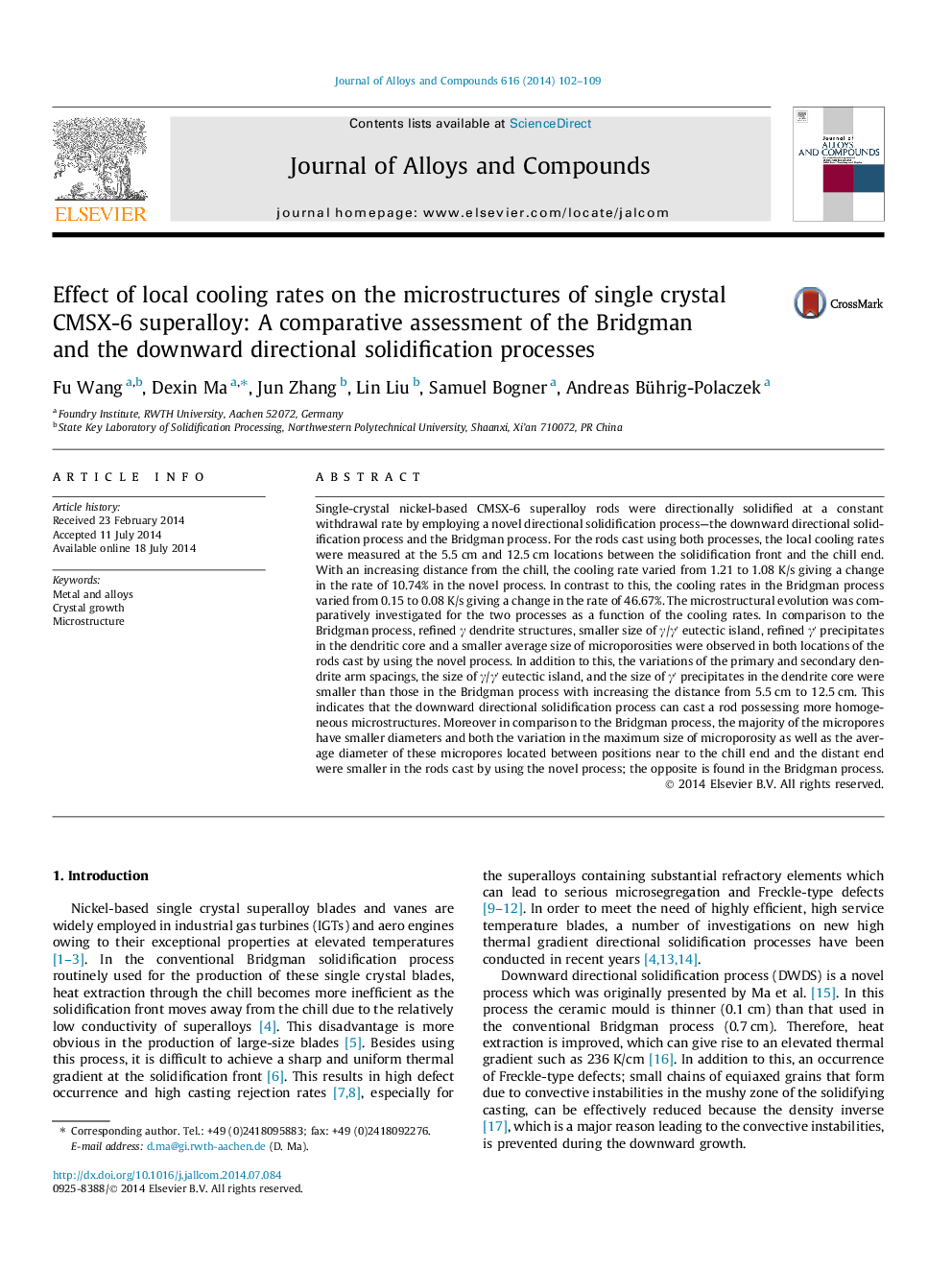| Article ID | Journal | Published Year | Pages | File Type |
|---|---|---|---|---|
| 8000742 | Journal of Alloys and Compounds | 2014 | 8 Pages |
Abstract
Single-crystal nickel-based CMSX-6 superalloy rods were directionally solidified at a constant withdrawal rate by employing a novel directional solidification process-the downward directional solidification process and the Bridgman process. For the rods cast using both processes, the local cooling rates were measured at the 5.5 cm and 12.5 cm locations between the solidification front and the chill end. With an increasing distance from the chill, the cooling rate varied from 1.21 to 1.08 K/s giving a change in the rate of 10.74% in the novel process. In contrast to this, the cooling rates in the Bridgman process varied from 0.15 to 0.08 K/s giving a change in the rate of 46.67%. The microstructural evolution was comparatively investigated for the two processes as a function of the cooling rates. In comparison to the Bridgman process, refined γ dendrite structures, smaller size of γ/γⲠeutectic island, refined γⲠprecipitates in the dendritic core and a smaller average size of microporosities were observed in both locations of the rods cast by using the novel process. In addition to this, the variations of the primary and secondary dendrite arm spacings, the size of γ/γⲠeutectic island, and the size of γⲠprecipitates in the dendrite core were smaller than those in the Bridgman process with increasing the distance from 5.5 cm to 12.5 cm. This indicates that the downward directional solidification process can cast a rod possessing more homogeneous microstructures. Moreover in comparison to the Bridgman process, the majority of the micropores have smaller diameters and both the variation in the maximum size of microporosity as well as the average diameter of these micropores located between positions near to the chill end and the distant end were smaller in the rods cast by using the novel process; the opposite is found in the Bridgman process.
Related Topics
Physical Sciences and Engineering
Materials Science
Metals and Alloys
Authors
Fu Wang, Dexin Ma, Jun Zhang, Lin Liu, Samuel Bogner, Andreas Bührig-Polaczek,
